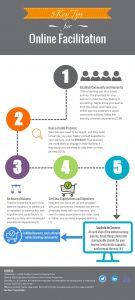Evaluative Tool Overview
Marshall Hartlen, Bobbi Donnison, Krista Frate, & Nicolette Young
Using the design thinking process (Stanford University Institute of Design, 2016) and LORI (Leacock & Nesbitt, 2007) as guides, we decided to assess our assigned Digital learning tools (DLT) on criteria which we felt were fair representations of: design, flexibility of use, accessibility, user awareness, and problem assessment. The various descriptors are inter-related with some aspects being dependant on the successful representation of other aspects.
|
Excellent |
Proficient |
Satisfactory |
Limited |
| Design |
Digital tool design is engaging and facilitates understanding through intuitive design properties. Design choices effectively promote cognitive load distribution |
Digital tool design is effective and facilitates understanding through well chosen design properties. Design choices promote cognitive load distribution |
Digital tool design is adequate and facilitates understanding through simplistic design properties. Design choices may effectively promote cognitive load distribution |
Digital tool design is ineffective and does not promote understanding through inadequate design properties. Design choices do not promote cognitive load distribution |
| Usability and accessibility |
The DLT is intuitive and includes a variety of built in features that accommodate a wide range of users |
The DLT is fairly intuitive and includes some built in features that accommodate a wide range of users |
The DLT is effective and includes some built in features that accommodate average users |
The DLT is counter-intuitive and built in features only accommodate the most basic range of users |
| User awareness (empathy) |
DLT is astutely designed with the needs of the end user in mind, and empathetic design features are clearly evident |
DLT is proficiently designed with the needs of the end user in mind, and empathetic design features are evident |
DLT is competently designed with the needs of the end user in mind, and empathetic design features are fairly evident |
DLT design is inadequate with the needs of the end user not clearly considered. Empathetic design features are not evident |
| Problem Assessment |
The DLT serves as a perceptive solution to problem(s) outlined in the empathy phase of design thinking. |
The DLT serves as an insightful solution to problem(s) outlined in the empathy phase of design thinking. |
The DLT serves as an adequate solution to problem(s) outlined in the empathy phase of design thinking. |
The DLT does not provide an adequate solution to problem(s) outlined in the empathy phase of design thinking. |
Figure 1 Evaluative Rubric
Design
Design refers to more than just an aesthetically pleasing and functional tool, but should also work to make learning easier for the user by minimising cognitive load, while maintaining ease of use. Poor presentation design can lead to users being having their verbal, visual or both, channels overloaded (Mayer & Moreno, 2003). According to Leacock and Nesbitt (2007) incorporating text, conceptual diagrams, audio and other formats can lead to a more effective and functional design.
Usability and Accessibility
Usability and accessibility to the majority of users ultimately determines the viability of DLTs. Most tools are designed by software experts and not people in the field of education (Nam & Smith-Jackson, 2017), this leaves the actual learning enabled via the tool suspect. It is difficult to design a tool that embraces constructivist learning (Martindale, Cates & Quan, 2005). Haderouitt (2010, emphasises the need to bridge technical and pedagogical usability that considers technical usability, as well as learning goals and theory. By considering both, the DLTs true educational impact is more easily measured.
User Awareness
Any successful digital tool should be designed around the needs of the user, not the whims of the design team. Empathetic design seeks to guide innovative efforts, discover and keep an awareness of human emotion, and discover needs that users have, but may not be aware of (Stanford University Institute of Design, 2016). By keeping empathy at the core of any design, the design team is more likely to yield a purposeful product by improving usability since the user experience is paramount. In addition, adhering to principles of empathy, problem assessment should also be addressed.
Problem Assessment
Addressing user generated problems requires first understanding the user. Doing so in the empathy phase of design thinking, should lead to a problem assessment that provides focus for the problem, inspires creative design that recognizably addresses the user problem(s) (Stanford University Institute of Design, 2016). Leacock and Nesbitt ( 2007) stress the importance of linking learning activities to the problem, and hold this to be a key feature of their framework. By focussing on the solving the problem, the DLT ultimately serves its purpose of facilitating user learning, and this determiner could be seen as the most important to the overall assessment.
References
Hadjerrouit, S. (2010). A conceptual framework for using and evaluating web-based learning resources in school education. Journal of Information Technology Education: Research, 9, 53-79.
Leacock, T. L., & Nesbit, J. C. (2007). A framework for evaluating the quality of multimedia learning resources. Journal of Educational Technology & Society, 10(2).
Martinidale, T., Cates, W. M., & Qian, Y. (2005). Analysis of recognized Web-based educational resources. Computers in the Schools, 21(3), 101-117.
Mayer, R. E., & Moreno, R. (2003). Nine ways to reduce cognitive load in multimedia learning. Educational psychologist, 38(1), 43-52.
Nam; C. S., & Smith-Jackson, T. L. (2007). Web-based learning environment: A theory-based design process for development and evaluation. Journal of Information Technology Education, 6, 23- 44.
Stanford University Institute of Design. (2016). Bootcamp Bootleg. Retrieved from http://dschool-old.stanford.edu/wp-content/uploads/2013/10/METHODCARDS-v3-slim.pdf

